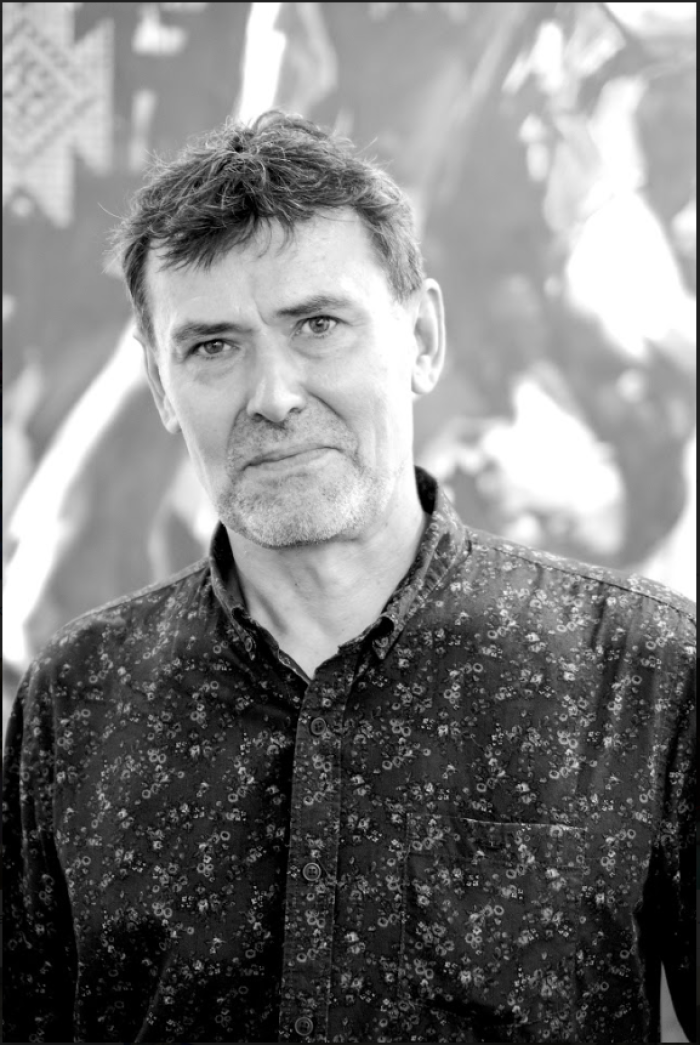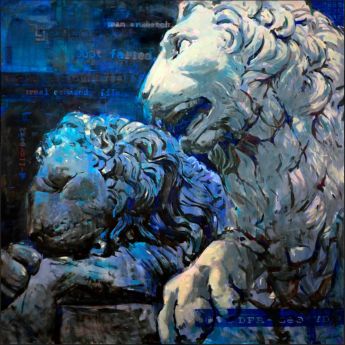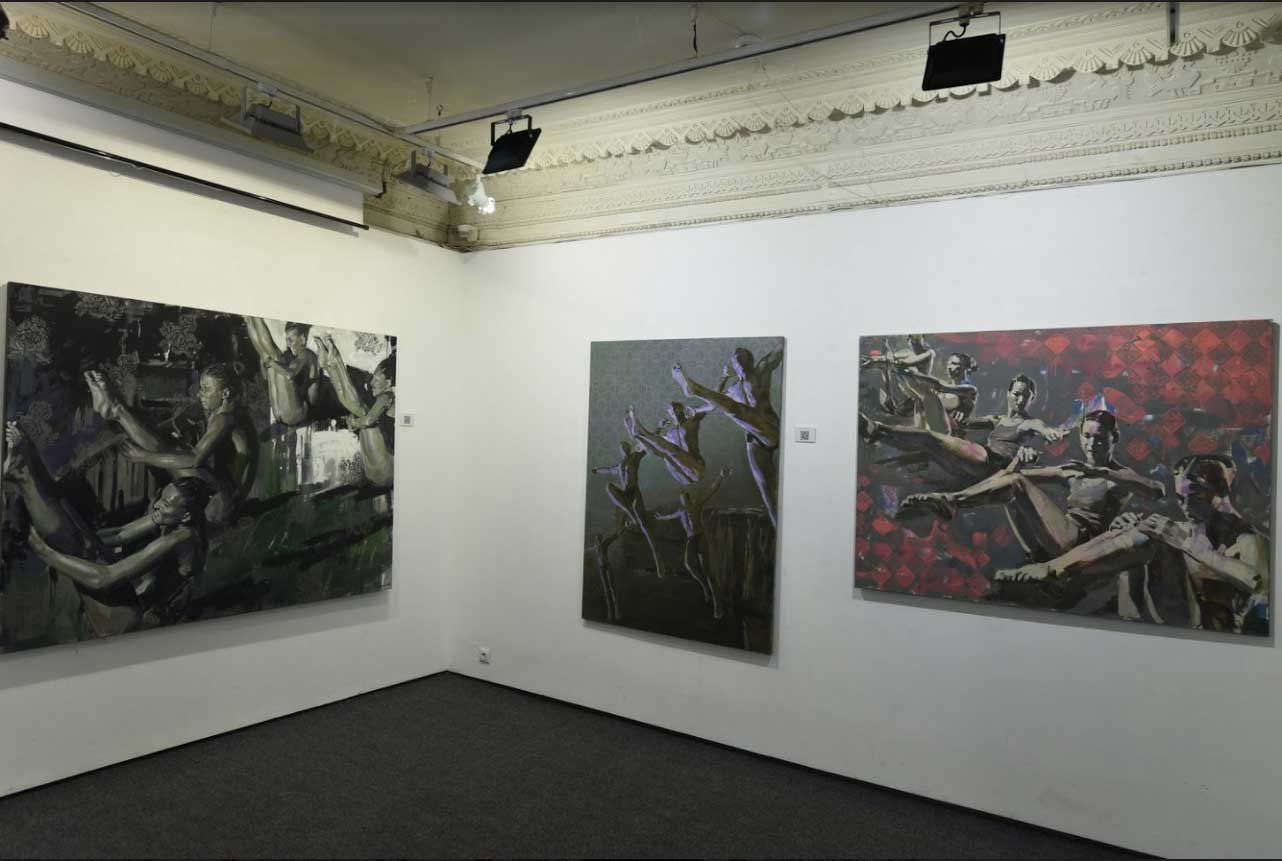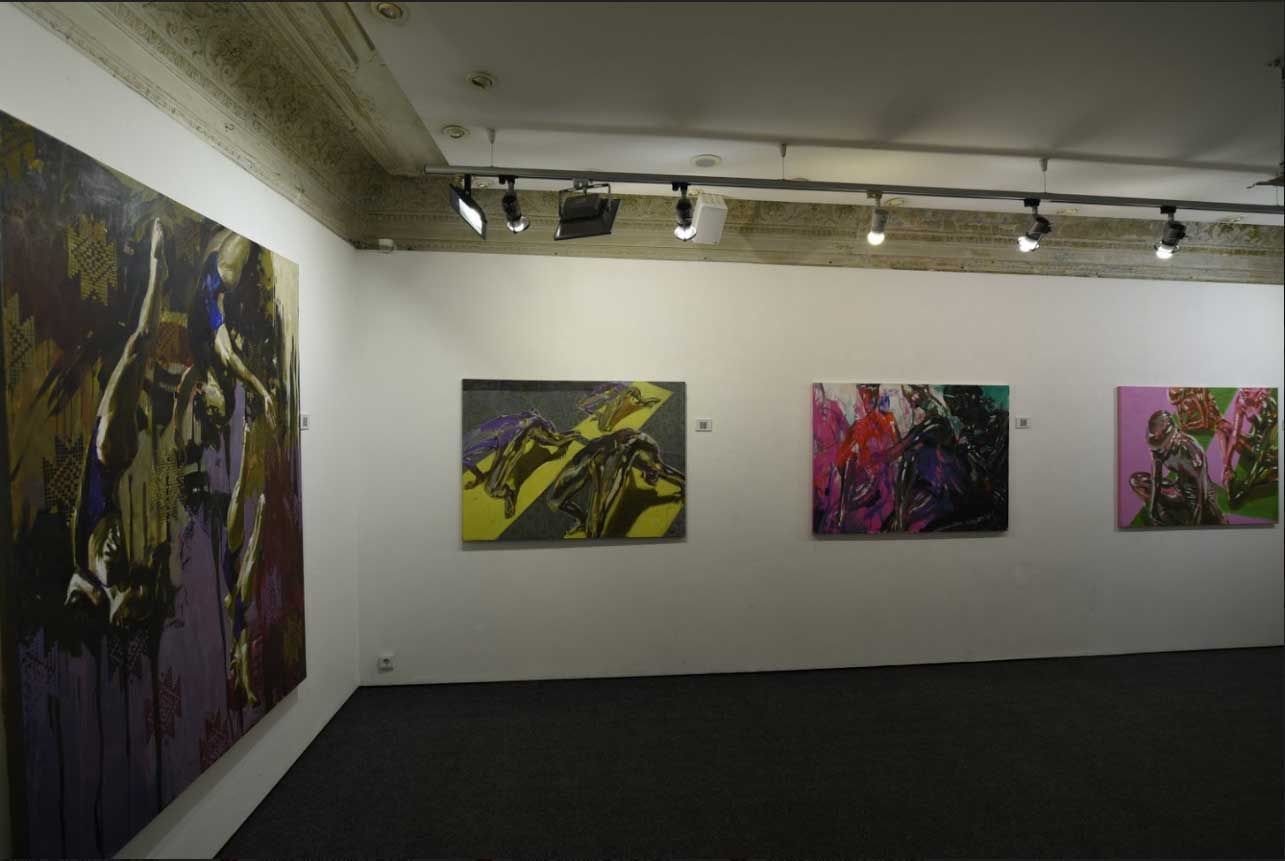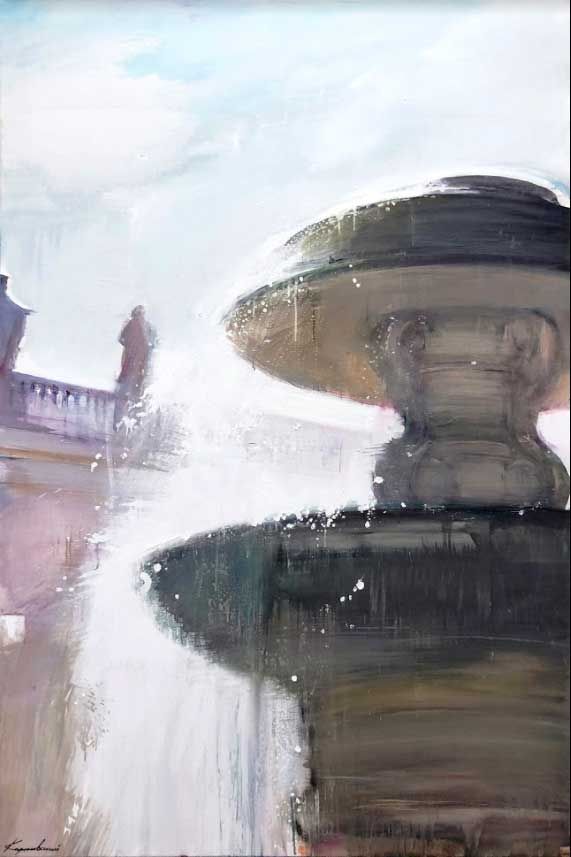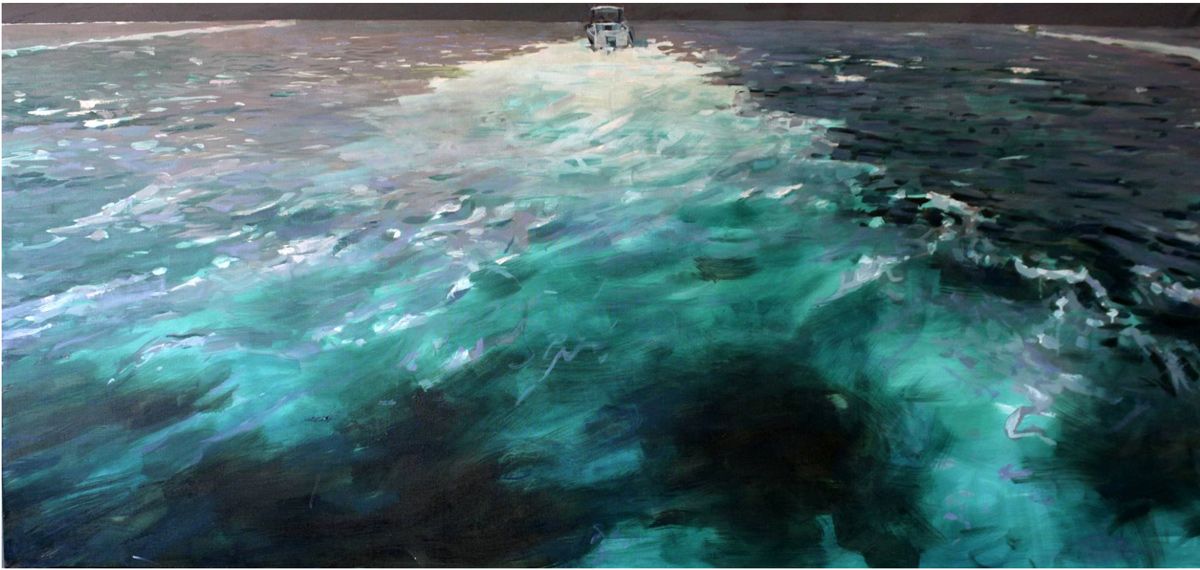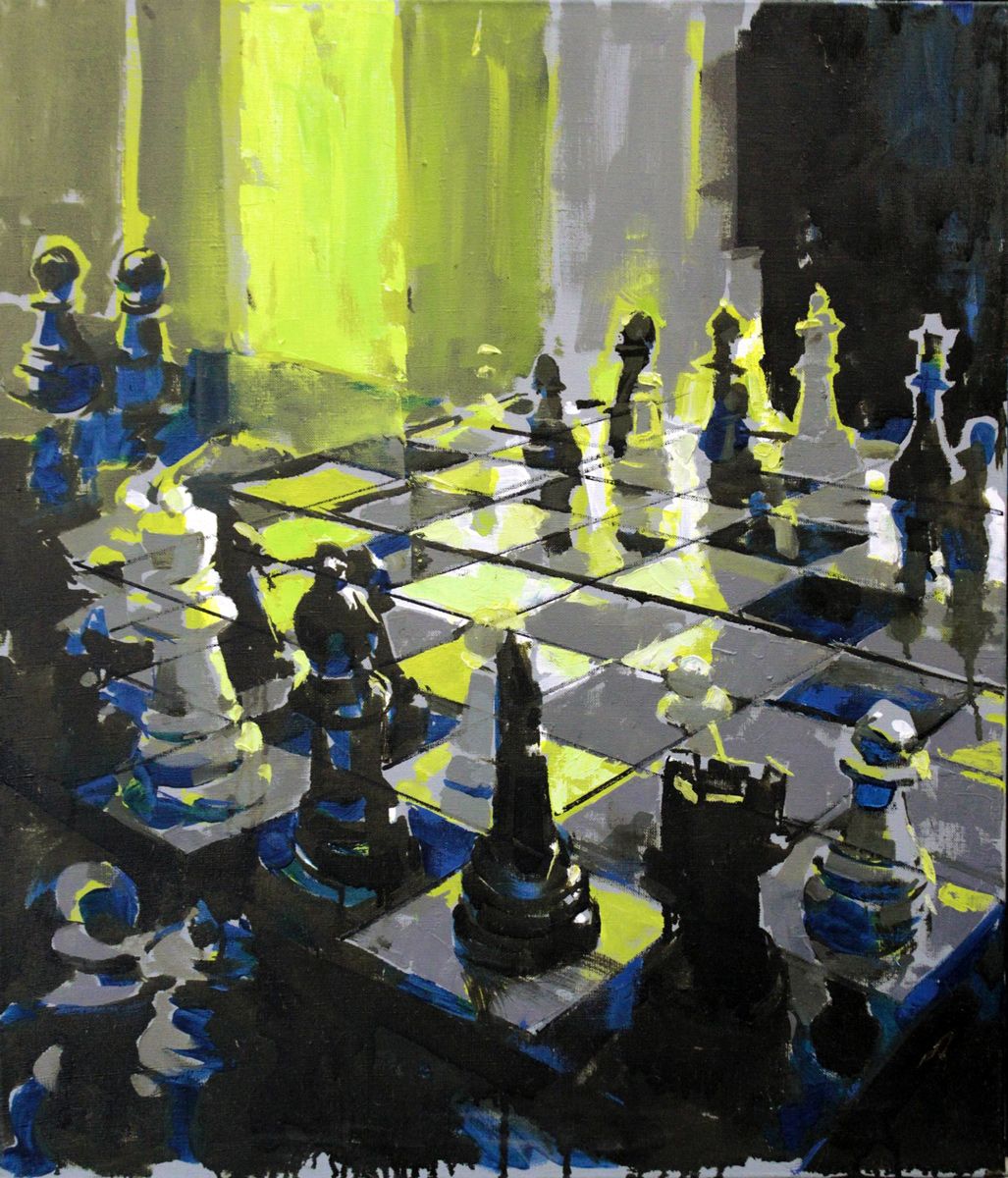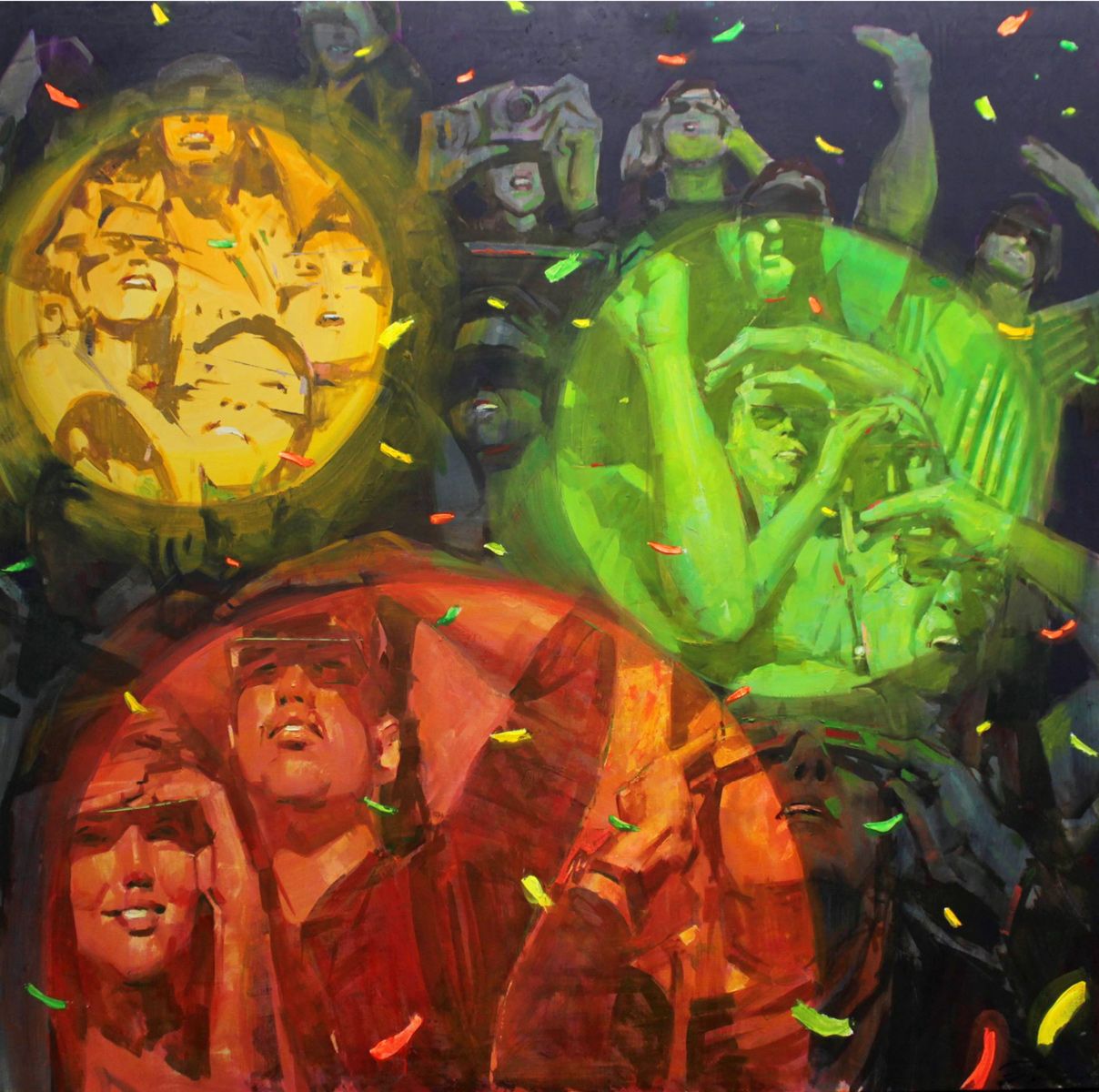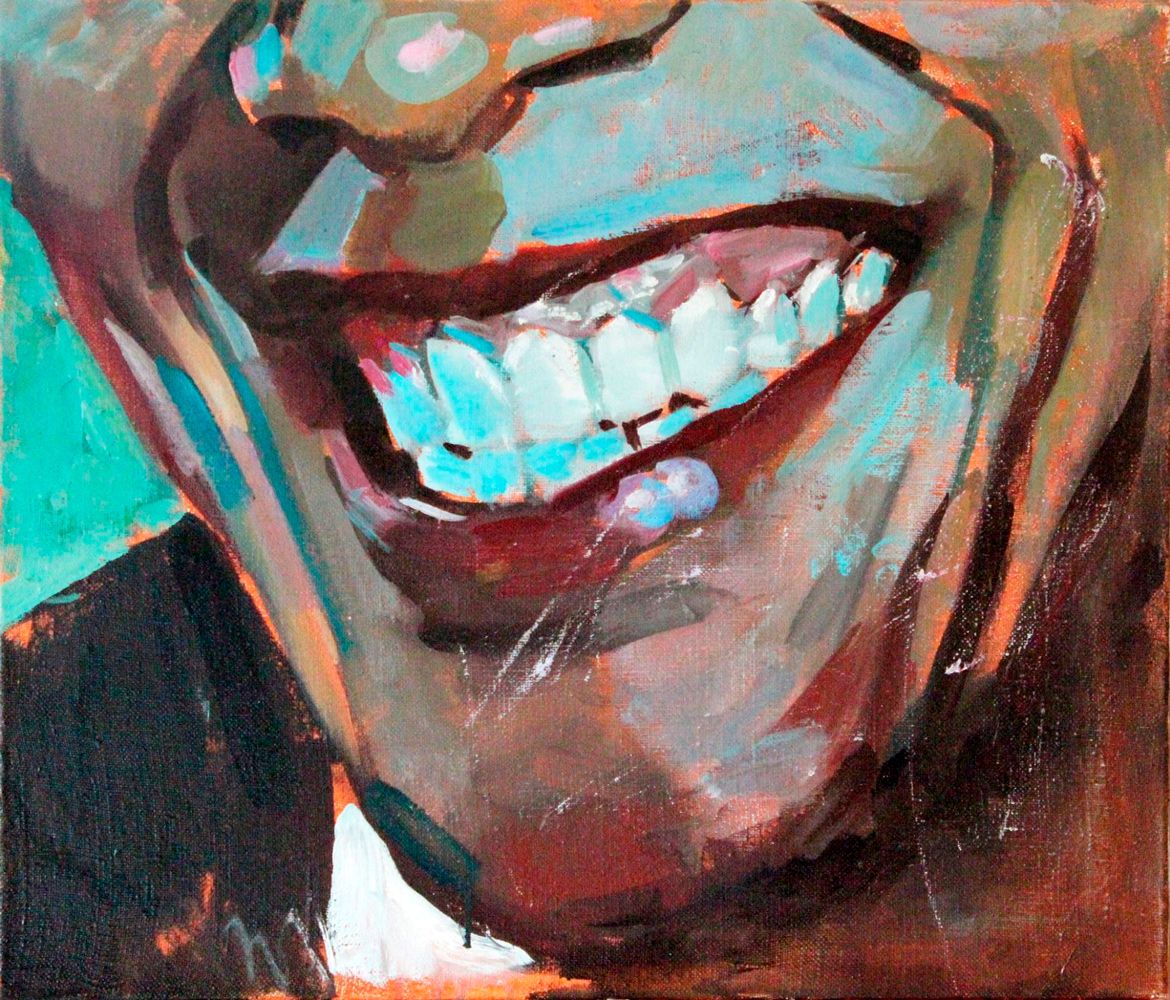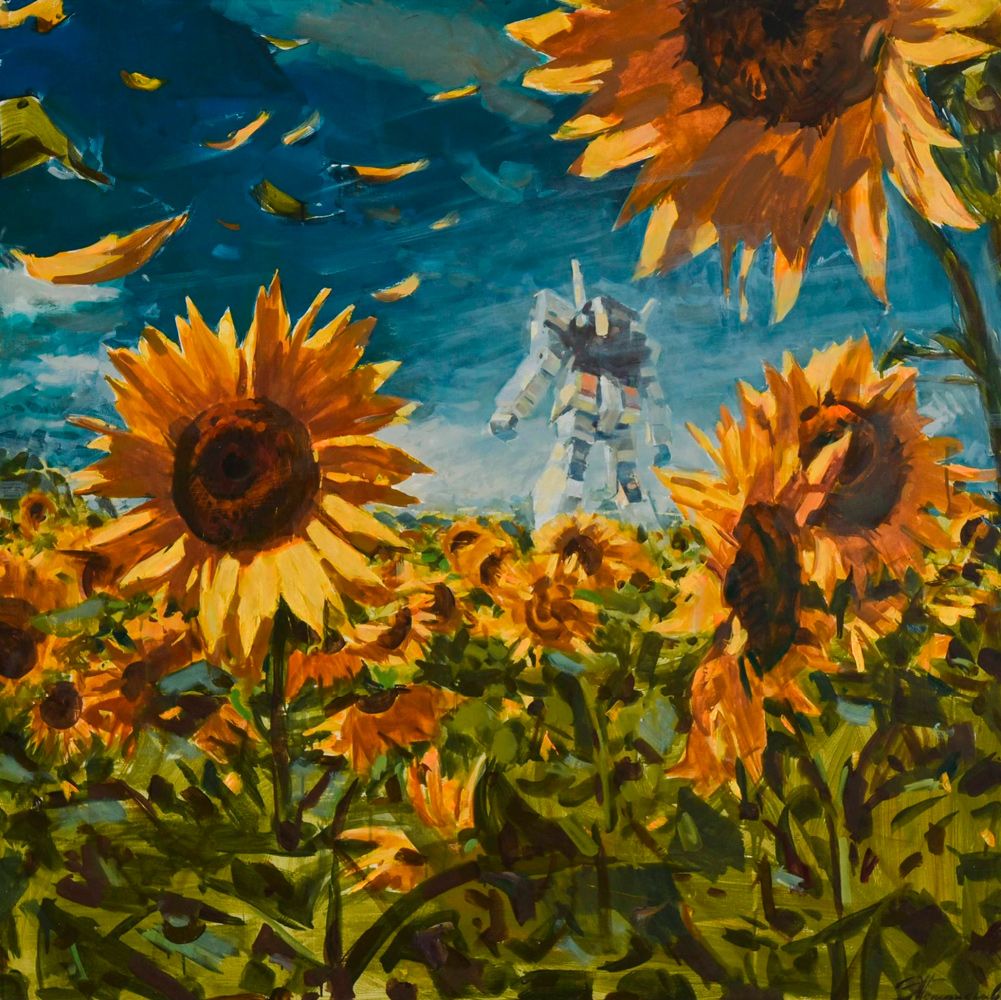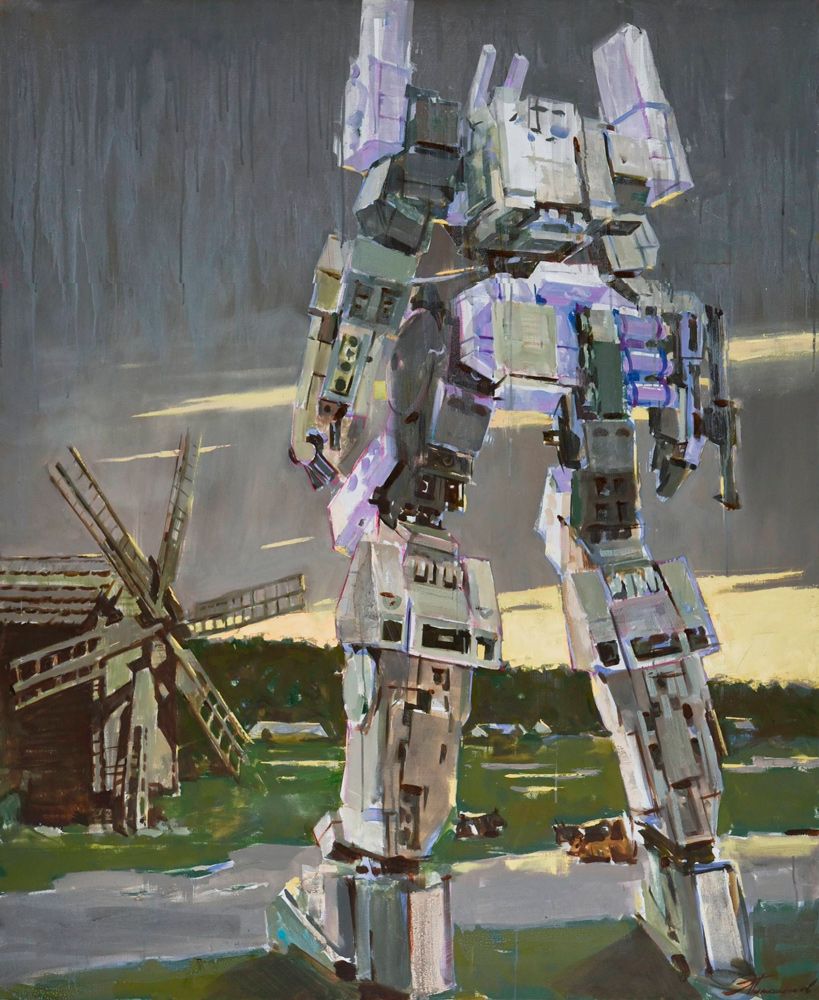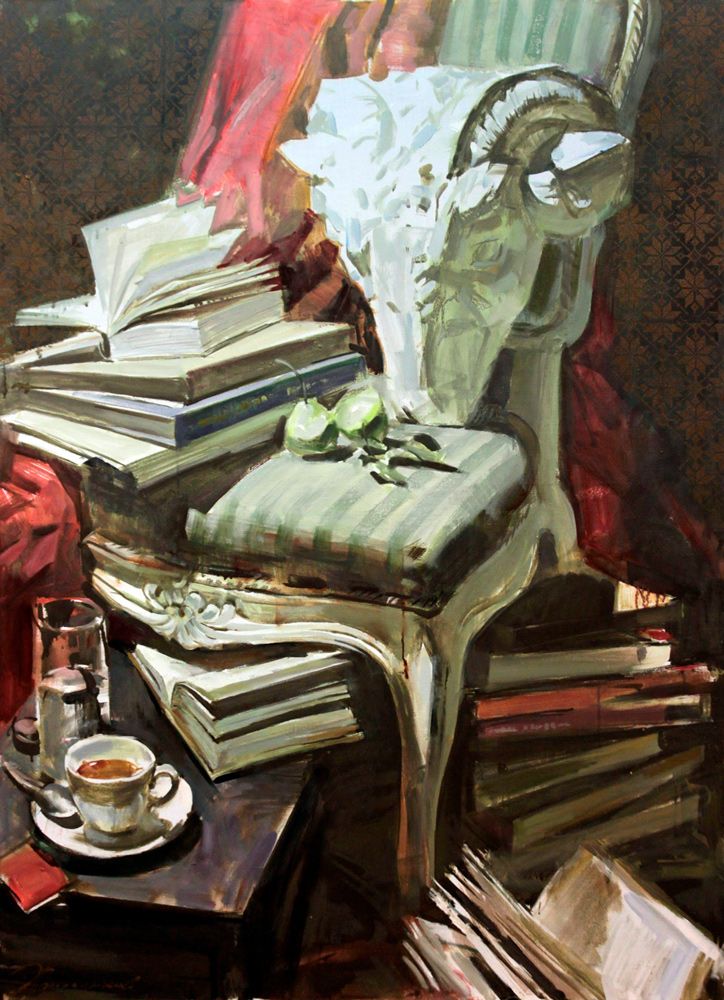Ed Potapenkov
See the originals of paintings by Eduard Potapenkov In the Satija Gallery in Prague, we will be glad to present you paintings by a professional famous artist.
Greetings to everyone who is on the pages of this site.
A little bit about myself.
I was born in 1968 in Dnepropetrovsk.
1987 - graduated from the Dnepropetrovsk Art School.
1995 - from the National Academy of Fine Arts / easel painting workshop /.
1993-1996 - Member of the art association "Cold VEL".
Member of the creative group "Squat on Olegovskaya".
I live and work in Kiev.
I am grateful for the interest in my work.
Best regards, Eduard Potapenkov
Eduard Potapenkov's new painting series "In Shape" touches on many topical issues today. The clash of the human individual and society, the desire for self-identification, the attempt to conform to the nurtured ideal - and the thorny path to such a new year, all this only outlines, not exhausts the content of the works. The very ambiguity of the slogan dictated both the conditional-binary composition of the series and its double, triple meanings. The notion of "in uniform" primarily means the corporate unification of the military model, which poses certain threats to the environment, hence the inevitable opposition of ruthless "security forces" - sluggish "civilian". Which, by definition, is always "out of shape", which brings us to the highest level of signification, associated with an uncontrollable desire to acquire the inner core and external-disciplinary design of his skillful nurture, which requires from the individual almost daily training, which is also possible to understand the dual / trinity: both as an improvement of the bodily image and as a permanent spiritual catharsis - finally, as an uprising from the prison of "abominable flesh" (Evelyn Vo). The first part of the series, named by the artist as "Silicon", is closely connected with the latter. The power of amorphous, indeterminate organisms, whose genealogy is addressed both to the bold experiments of modern cybernetics (and cosmetic surgery, which often sacrifices dubious pygmalions), and to the chthonic past of the human person, which the latter tries to overcome, transgress, and transgress. The characters of "Silicon" are stuck between the conditionally anthropomorphic and the unconditionally mechanistic, as exemplified by the mini-parade of quasi-glamorous mannequins that were so loved by surreal marginals like Hans Belmer. But the leitmotif of the patterned background - solved by the motifs of traditional geometric rhythms - gives these creatures an illusory chance to overcome the fate of life, which seems to them intolerable. Instead, the characters of the second part of Eduard Potapenkov's series, which is simply called "Right", ie "Right" - face another risk of their own significance, which they confidently approach. (Note that the idea was facilitated by impressions from contemplation of the practices of some Eastern esoteric practices, popular in our daily lives, despite the ambivalence of their results). What losses does a person suffer in the direction of his own perfection? What will have to give up? Is the game of candles worth it? And does not fall into an individual who has lost one kind of restrictions - the restrictions of others, more fatal, chronic, terrible? The yoke of rules, which is sometimes imposed on a person, replaces the chaotic "lawlessness", to which there is no gate. Self-improvement is like self-torture, but letting everything run wild is not a tolerable way out either. "Form", like a mask, grows on the epithelium - and adjacent organs, deforming their configuration - and setting for general approval the standard of "new beauty", dictated by the "new order" of structural existence. - But, as the hero of the popular novel said, "maybe that's the truth?" In addition, "In shape" is also the undisguised virtuosity of Eduard Potapenkov's brushstroke, the ability to convey the most intricate angle of the body with a few strokes of the brush, the convexity of a capricious shape - here is, by the way, another nuance of the proclaimed slogan. The contents of an artifact are worthless if their good intentions are not confirmed by an adequate level of formal solution: not a sufficient, but absolutely necessary condition for the existence of a masterful artifact. Looking at which, the viewer will confidently say: the author - in shape! And will wait to continue.
Oleg Sidor-Gibelinda, candidate of art history.
